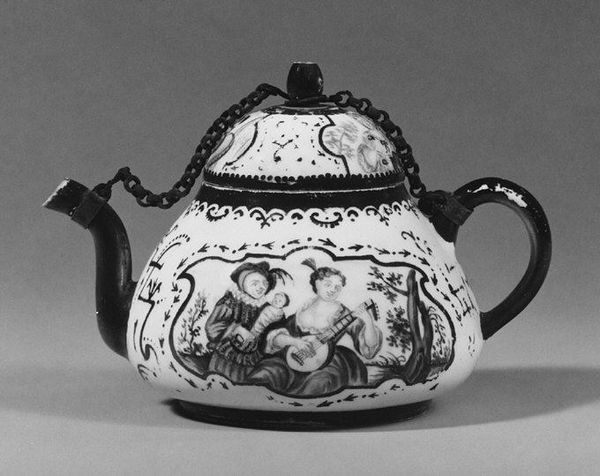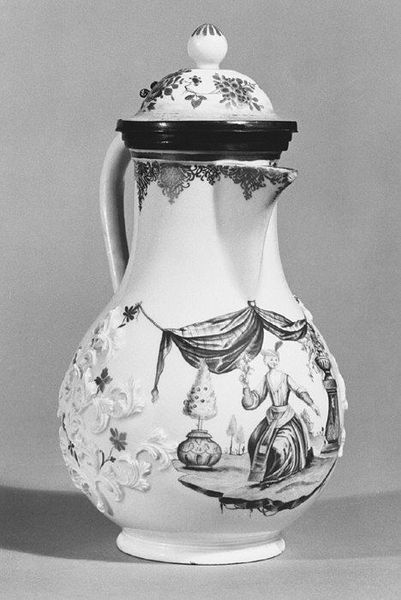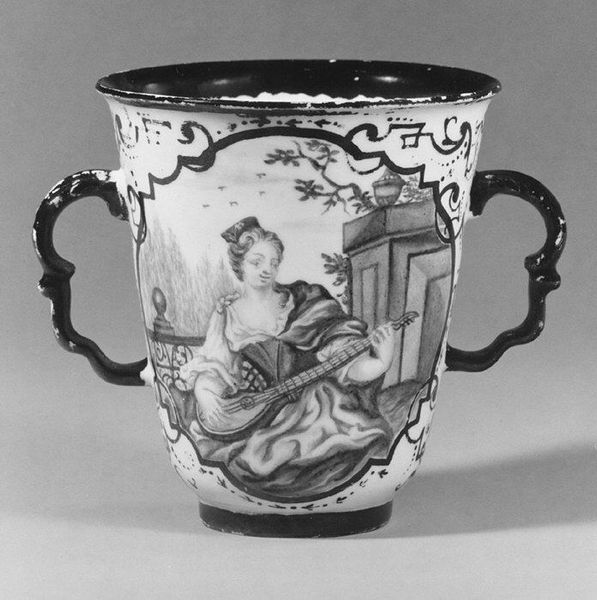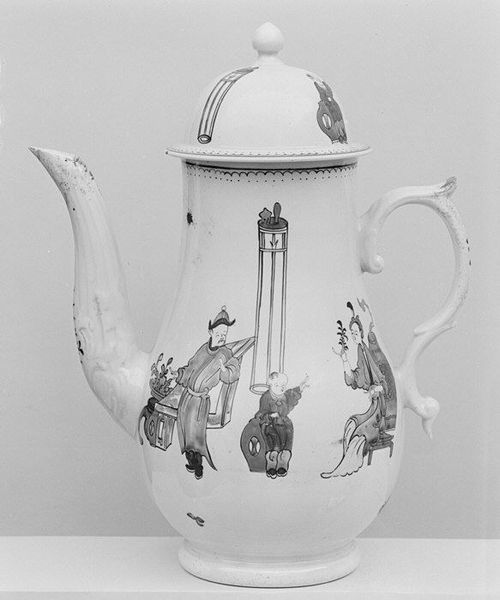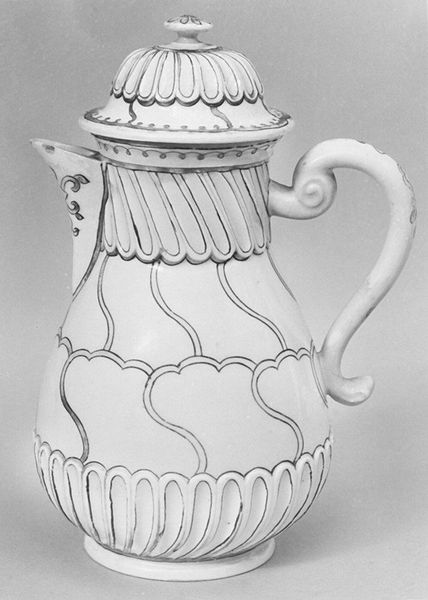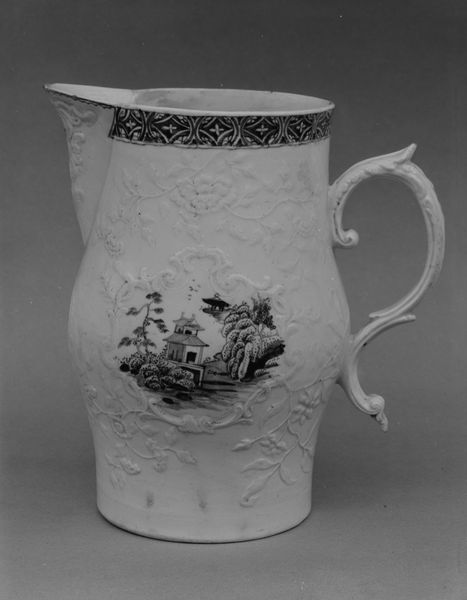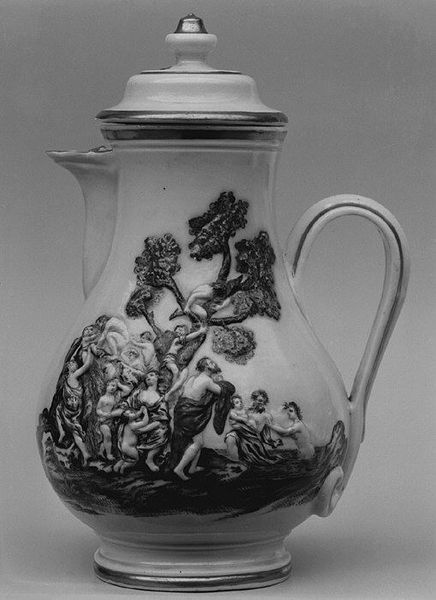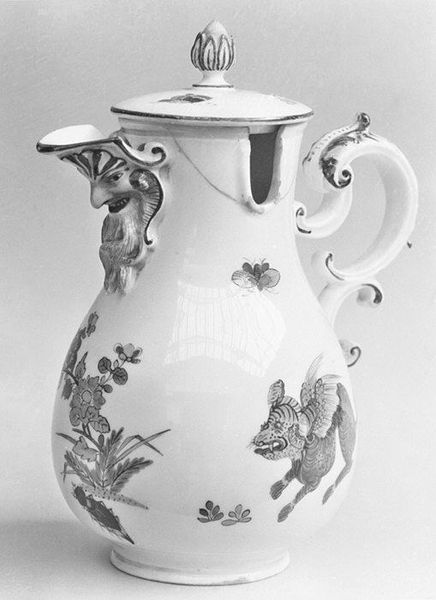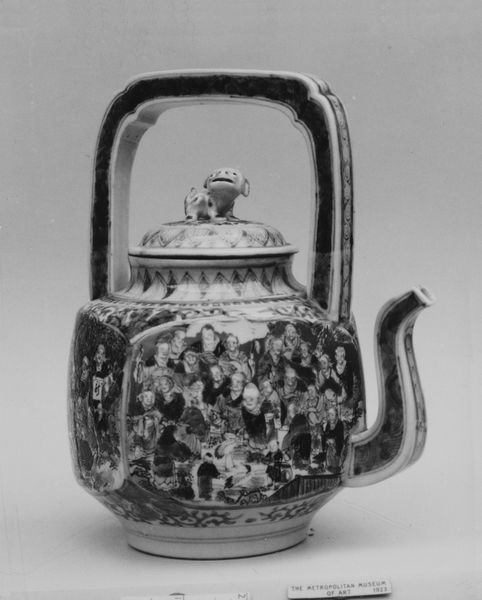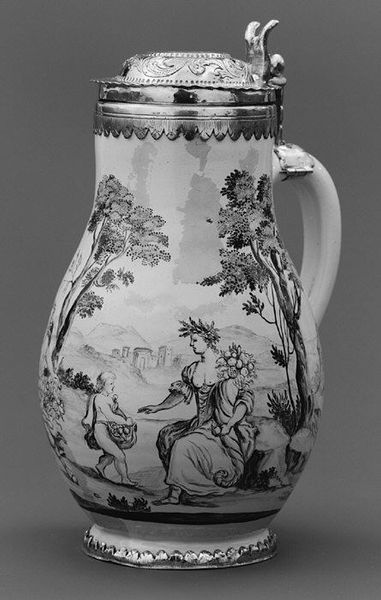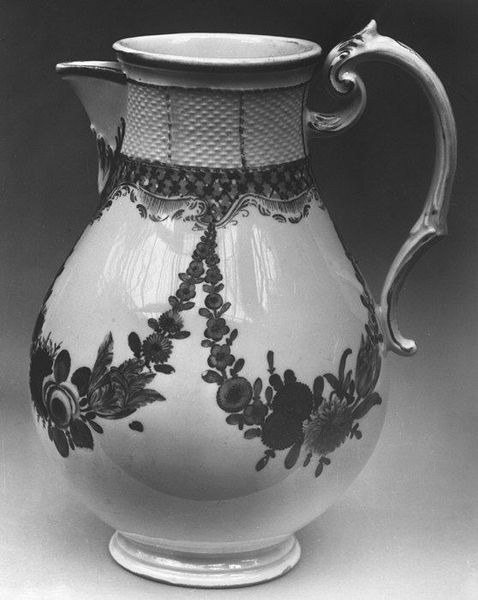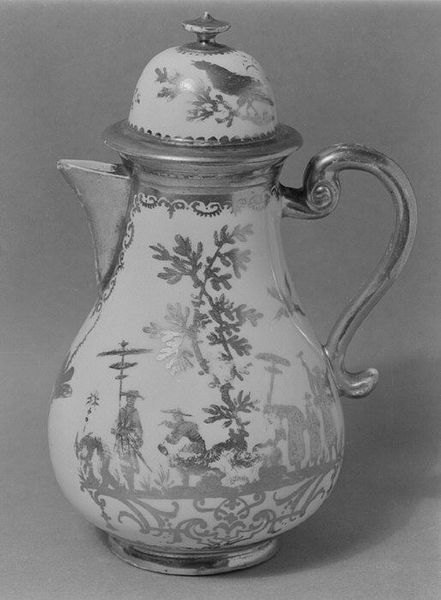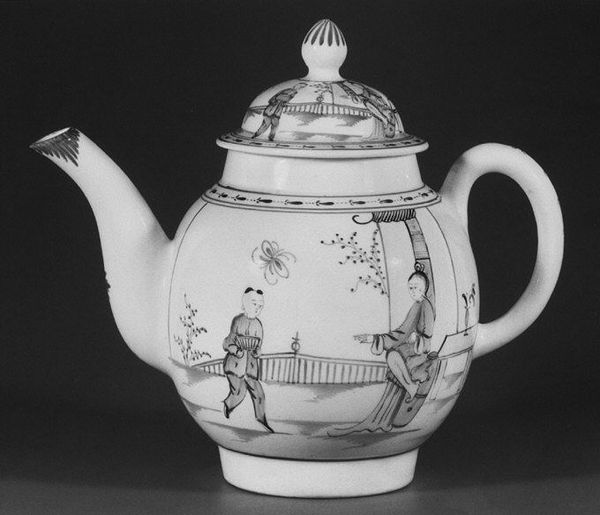
ceramic, porcelain, sculpture
#
ceramic
#
porcelain
#
figuration
#
sculpture
#
genre-painting
#
decorative-art
#
rococo
Dimensions: Height: 7 11/16 in. (19.5 cm)
Copyright: Public Domain
Curator: I'm immediately struck by the delightful extravagance of this coffeepot. Its surface is alive with figuration. What catches your eye? Editor: The contrast, honestly. Such a mundane object, elevated through pure artistry, reminds us of the stark social divides of the era. How do the depictions speak to that history? Curator: Indeed. This coffeepot, a Rococo-style creation crafted between 1720 and 1730, showcases more than just aesthetic design; it gives glimpses into cultural values of the period. You will find it now in the collection of the Metropolitan Museum of Art. Editor: Right, it’s hard to ignore that these are not depictions of laborers brewing coffee, but rather of leisure and privilege. Look closely, and the scenes appear as vignettes lifted straight from a genre painting, reflecting perhaps idealized or romanticized lifestyles available to very few. How were these images transferred onto the ceramic? Curator: Expertly applied, likely through painstaking hand-painting on porcelain, elevating a functional object to a status symbol. These detailed scenes aren't just decorations; they're visual cues, acting as both aspirational emblems for its owners and symbols that affirmed their social standing. Consider its visual storytelling. The delicate details become almost dreamlike. Do the symbols feel at odds to you, juxtaposed to the banality of the product? Editor: Absolutely. The dissonance between function and form creates an unsettling feeling, as if a miniature world of aristocratic indulgence is superimposed onto a vessel intended for everyday use. The ceramic, beautiful in its own right, becomes a charged artifact speaking of exclusivity. What could sipping coffee from such a piece mean, other than belonging? Curator: Perhaps an assertion of one’s elevated status in society through an aesthetic ritual? Think of the object as part of a constellation of other luxury goods: furniture, fabrics, refined clothing. All contribute to establishing the owner's place within an elite social sphere. The scenes themselves are not necessarily grounded in a practical narrative. The value, in other words, extends beyond surface decoration. Editor: That feels like a vital consideration; that we look past it as mere decoration. And that, maybe, luxury can blind us, can't it? A sip can never just be a sip! Curator: Exactly, this seemingly simple coffeepot overflows with complexity, challenging us to rethink domestic objects as meaningful conveyors of cultural and societal ideas. Editor: Indeed! Every curve and scene adds depth to our comprehension.
Comments
No comments
Be the first to comment and join the conversation on the ultimate creative platform.
